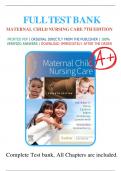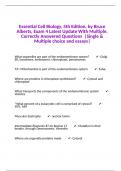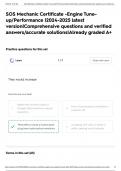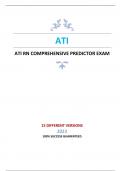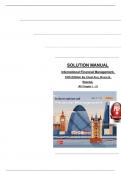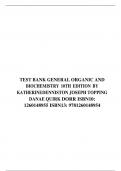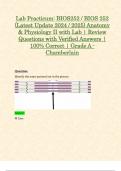Exam (elaborations)
Test Bank For Maternal Child Nursing Care, 7th Edition by Shannon E. Perry, Marilyn J. Hockenberry, Mary Catherine Cashion| 9780323776714| All Chapters (1-50) LATEST
Test Bank For Maternal Child Nursing Care, 7th Edition by Shannon E. Perry, Marilyn J. Hockenberry, Mary Catherine Cashion| 9780323776714| All Chapters (1-50) LATEST
[Show more]
